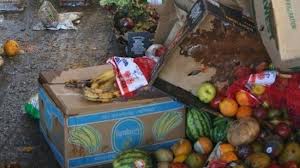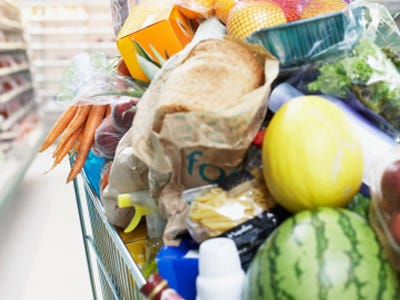The best innovation at Pack Expo wasn’t just one package
Las Vegas - On the last day of Pack Expo (Sept. 23-25; Las Vegas), I talked with Dow Chemical's Greg Jozwiak, commercial VP for North America packaging and specialty plastics. As we wrapped up the interview, he asked me what was the best product or innovation I've seen at Pack Expo.I was stumped. Not because I didn't see some cool products that I'll be writing about in the next coming days. I did, of course.
September 27, 2013
Las Vegas - On the last day of Pack Expo (Sept. 23-25; Las Vegas), I talked with Dow Chemical's Greg Jozwiak, commercial VP for North America packaging and specialty plastics. As we wrapped up the interview, he asked me what was the best product or innovation I've seen at Pack Expo.
I was stumped. Not because I didn't see some cool products that I'll be writing about in the next coming days. I did, of course.
What I immediately thought about wasn't a pouch or shrink wrap labels - but rather a real, tangible issue - food security. I've come to find out that many in the industry are working to solve that global issue. And that is bigger than just one package and just one company.
 Every year, nearly one-third of the food produced in the world for human consumption is lost or wasted, according to the UN Food and Agriculture Organization (FAO). At the same time, with global population expected to grow to 9 billion people by 2050, the FAO also reports global food production will need to be 70% greater than today's level.

Every year, nearly one-third of the food produced in the world for human consumption is lost or wasted, according to the UN Food and Agriculture Organization (FAO). At the same time, with global population expected to grow to 9 billion people by 2050, the FAO also reports global food production will need to be 70% greater than today's level.

DuPont Packaging Leader Yasmin Siddiqi sat down and talked with me about factors impacting food security. She showed me the Global Food Security Index, which was developed by the Economist Intelligence Unit and commissioned by DuPont.
"Packaging leaders need to come together and rally around this topic and understand how packaging can impact food security and make a difference," she said. "This really is a key topic that I think packaging leaders should be involved in."
Jozwiak with Dow also mentioned food security and the company's focus on how packaging can play a role to address the global food crises and food waste.
"For brand owners, packaging and materials suppliers, the security of the package is of high interest," he said. "It's a global issue - packaging integrity and the concept of having the package work to extend the shelf life and reduce spoilage."
Packaging critical in reducing food waste: study
A recent study from RMIT University, commissioned by CHEP Australia, showed where and why food waste occurs along both the fresh and manufactured food supply chain. The research also proposes opportunities for the food manufacturing industry to address food waste through sustainable primary, secondary and tertiary packaging.
The study also considers how food waste can and should influence packaging design.
"Packaging actually plays a critical role in protecting fresh produce and processed food in transit, in storage, at point of sale and prior to consumption," said Karli Verghese, who led the research study. "In doing so it helps deliver a wide range of functions while reducing food waste."
sale and prior to consumption," said Karli Verghese, who led the research study. "In doing so it helps deliver a wide range of functions while reducing food waste."
Poor inventory management, overstocking shelves and product damage during transport and handling were all listed as avoidable contributors to food waste in the supply chain. Other contributors are present in agricultural production, including damage from pests and disease; unpredictable weather conditions and produce not meeting quality specifications as well as wastage at home including food preparation waste; food spoilage; preparing too much food; and used-by or best-before dates passing.
In terms of the consumer market, earlier this year a report conducted by the Institution of Mechanical Engineers, found that inadequate storage facilities, strict sell-by dates, bulk buying offers and fussy consumers contribute to as much as 50% of the world's food ending up as waste.
"There are certainly opportunities to minimize food waste through packaging innovation and design, such as improved ventilation and temperature control for fresh produce, and better understanding the dynamics between different levels of packaging, to ensure they are designed fit-for-purpose," Verghese said.
As part of the study, a number of opportunities to reduce food waste through packaging improvements were identified. These include:
Distribution packaging that provides better protection and shelf life for fresh produce as it moves from the farm to the processor, wholesaler or retailer. This may require the development of tailored solutions for individual products.
Distribution packaging that supports recovery of surplus and unsaleable fresh produce from farms and redirects it to food rescue organizations.
Improved design of secondary packaging to ensure that it is fit-for-purpose, i.e. that it adequately protects food products as they move through the supply chain. Packaging developers need to understand the distribution process and where and why waste occurs.
So maybe the next big packaging innovation isn't just about the package itself (such as the look and branding), but what the package can actually accomplish. In this case, helping to feed a hungry global population while also reducing food waste.
About the Author(s)
You May Also Like


